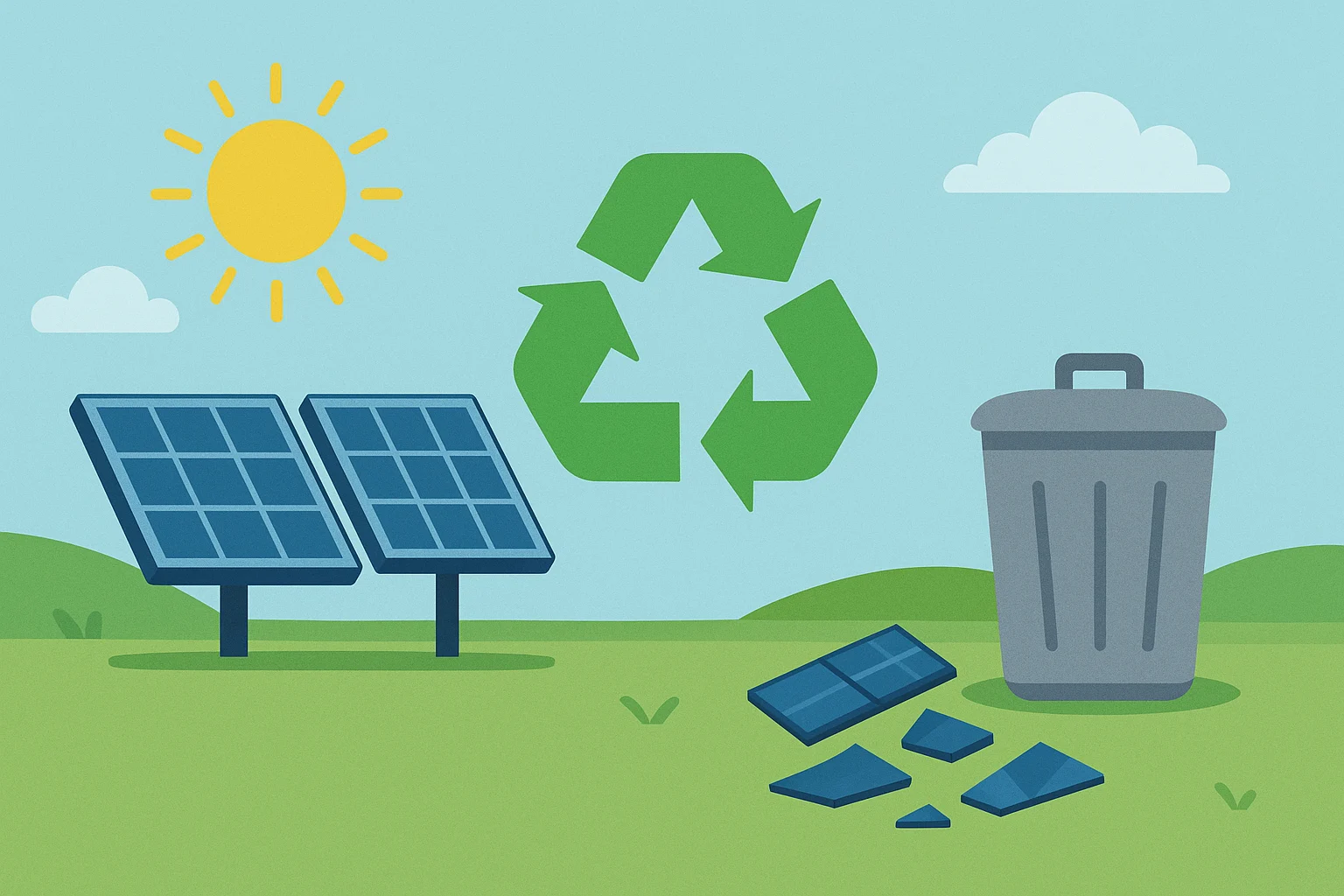As solar energy continues to power millions of homes and businesses worldwide, there’s an important question emerging alongside this growth: what happens to solar panels when they reach the end of their life cycle? This is where Solar Panel Recycling becomes crucial. Understanding how it works, why it matters, and what the future holds can help ensure solar energy remains a truly sustainable solution.

Why Solar Panel Recycling Matters
Solar panels typically last between 25 to 30 years. While that’s a long lifespan, the growing adoption of solar energy means that more panels will eventually need to be retired. Without proper recycling, these panels could contribute to electronic waste, releasing toxic materials like lead and cadmium into the environment.
By embracing Solar Panel Recycling, we can recover valuable materials such as silicon, glass, aluminum, and silver. These components can be reused in new panels or other products, reducing the need for raw material mining and supporting a circular economy.
The Process of Solar Panel Recycling
The recycling process generally involves three main steps:
- Collection and Transportation – Old or damaged panels are collected from solar farms, rooftops, and residential properties before being transported to recycling facilities.
- Mechanical Recycling – Panels are dismantled, and frames, junction boxes, and cables are separated. Glass and aluminum are removed easily and can be recycled with minimal processing.
- Thermal and Chemical Treatment – Silicon cells and other materials go through specialized treatments to extract precious metals and purify silicon for reuse. This stage is vital for making Solar Panel Recycling more efficient and cost-effective.
Environmental and Economic Benefits
The advantages of Solar Panel Recycling go beyond just waste reduction. Recycling conserves resources, lowers carbon emissions, and reduces the environmental impact of mining new materials. Additionally, it creates economic opportunities by fueling new industries focused on recovery and reuse.
With governments worldwide promoting renewable energy, the demand for efficient recycling solutions is set to grow. Developing industries around Solar Panel Recycling can also generate employment and reduce dependence on imported raw materials.
Challenges in Solar Panel Recycling
While the benefits are clear, there are still challenges to overcome. Current recycling methods can be expensive, and not all facilities are equipped to handle the complex structure of solar panels. Logistics, such as collection and transport from remote solar farms, also add costs.
Another challenge is awareness. Many solar panel owners are still unaware of recycling programs or may not know how to properly dispose of their old panels. Policies, incentives, and industry collaboration are needed to make Solar Panel Recycling more accessible and standardized.
Global Initiatives and Future Outlook
Countries like the European Union, Japan, and the United States are leading the way in solar recycling initiatives. The EU, for example, mandates that solar panels fall under the Waste Electrical and Electronic Equipment (WEEE) Directive, requiring proper recycling.
In the coming years, technological advancements are expected to make Solar Panel Recycling more cost-efficient and scalable. Researchers are exploring new ways to recover higher percentages of materials, including rare metals, with less energy. This innovation will help transform recycling into a profitable and sustainable industry.
How You Can Contribute
If you own solar panels, it’s important to plan for their eventual disposal. Contact your installer, manufacturer, or local recycling facility to learn about available options. Supporting companies that invest in sustainable solutions encourages the broader adoption of Solar Panel Recycling.
Conclusion
Solar energy is a clean, renewable power source that plays a major role in reducing carbon emissions. However, ensuring its long-term sustainability requires attention to the end-of-life stage of panels. Solar Panel Recycling is not just a technical process—it’s an essential step in building a greener future. By reclaiming valuable resources, reducing waste, and supporting circular economies, it ensures that solar power remains as environmentally friendly as it was meant to be.

Been placing my bets on betuploginbet for a while now. The odds are pretty competitive, and I’ve had a few good wins. Could maybe use a loyalty program, but other than that, I’m happy. Check it out for yourself: betuploginbet